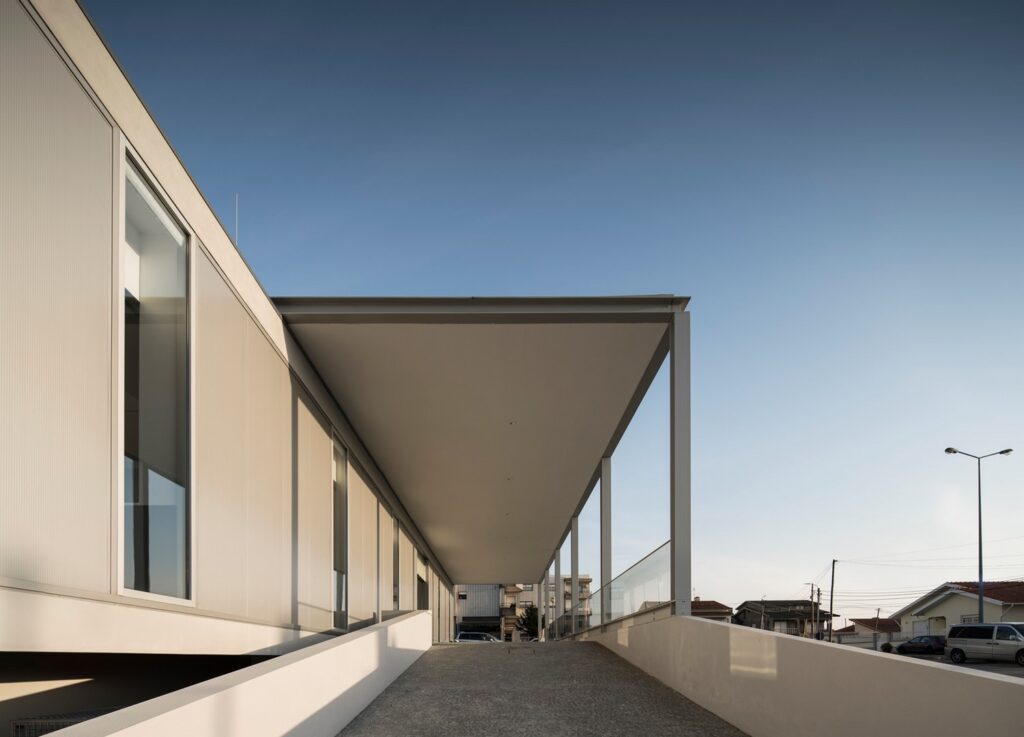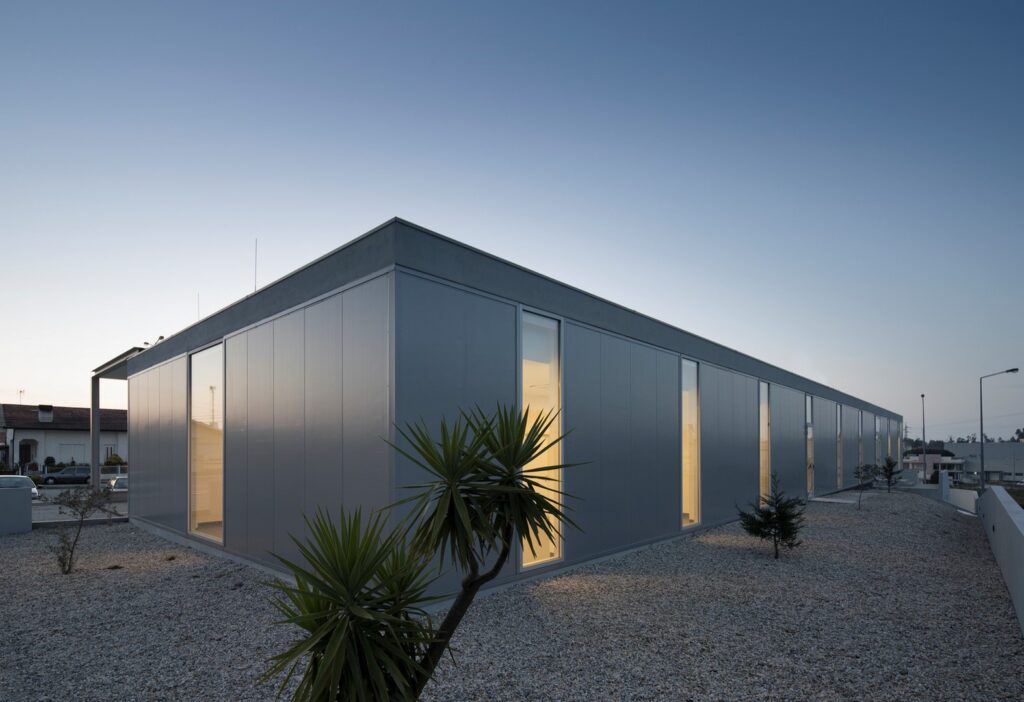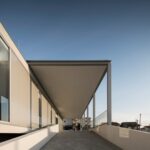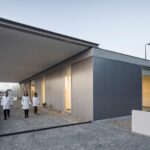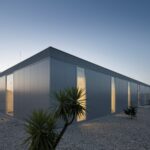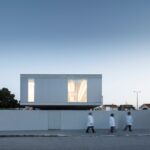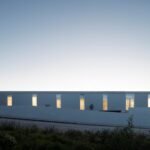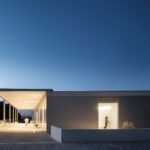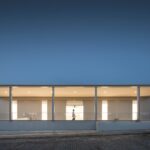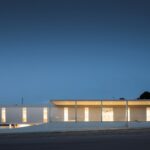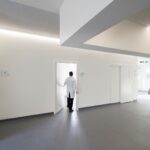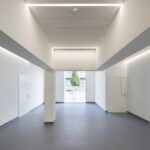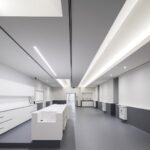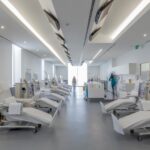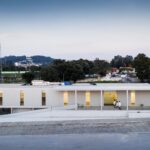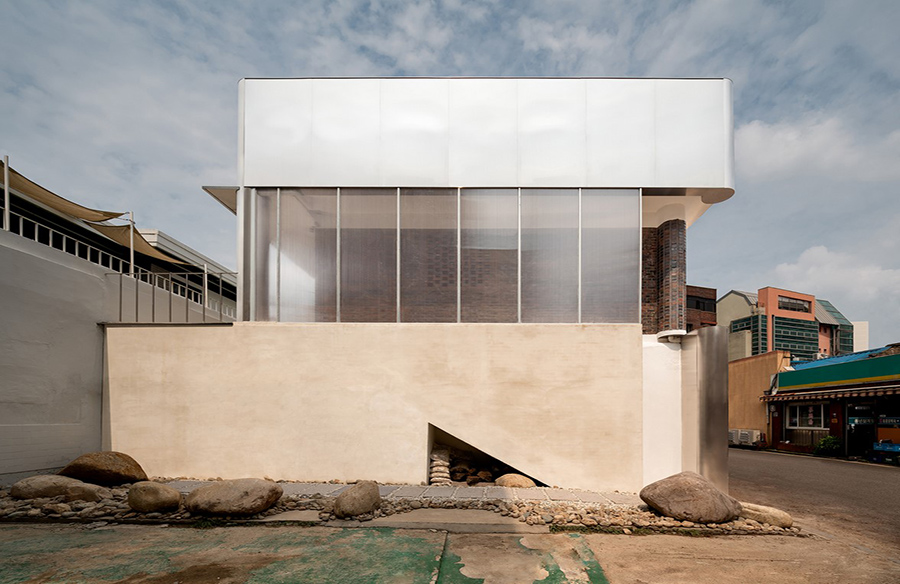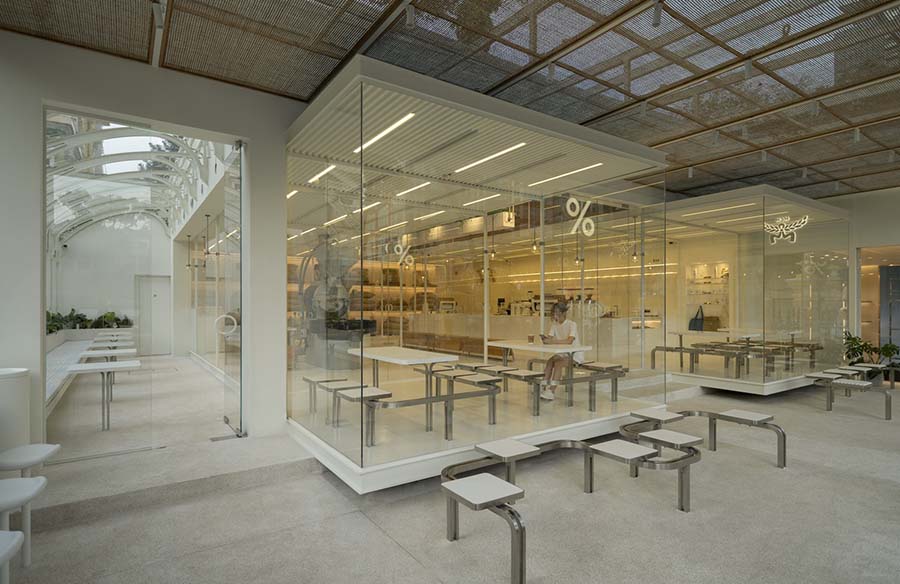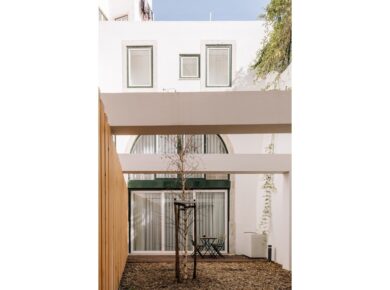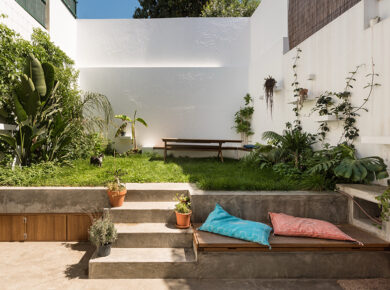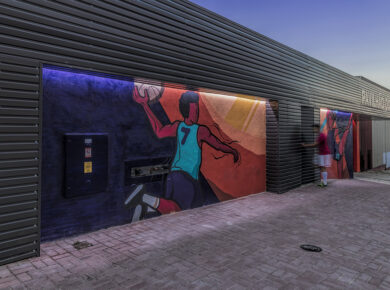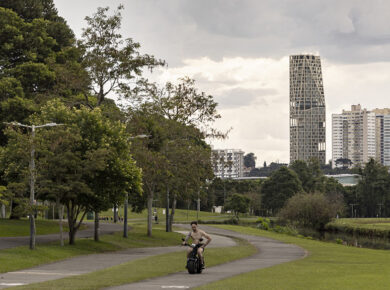The Nefrodouro Clinic, conceptualized by Ventura+Partners, challenges the conventional design of city clinics, aiming to create a distinct and welcoming space for patients.
Geometric Purity and Contemporary Aesthetics
The clinic features a parallelepipedic shape across two floors, characterized by geometric purity evident in the facade’s spans and panels. The modular structure, accentuated by concrete, glass, and aluminum elements, exudes both strength and elegance. The use of iron pillars further emphasizes the building’s horizontality, particularly at the entrance area, adding to its contemporary yet timeless aesthetic.
Harmonious Integration with Nature
Utilizing white as the dominant color and incorporating expressive windows, the clinic fosters harmony and serenity while allowing patients to connect with nature. The strategic placement of windows ensures abundant natural light throughout the space, enhancing the overall sense of well-being.
Comfort and Tranquility
Natural and artificial lighting play crucial roles in enhancing comfort and tranquility within the clinic. Vertical slots in the volume maximize natural light penetration while offering patients views of the exterior, particularly in the treatment room where patients spend extended periods. This focus on light and openness contributes to both physical and psychological comfort for patients.
Technological Advancements for Patient Well-being
The clinic’s architecture integrates advanced technologies to elevate clinical quality and promote patient and staff well-being. By prioritizing comfort, tranquility, and technological innovation, the Nefrodouro Hemodialysis Clinic redefines the standards for medical center design, ensuring a positive experience for all stakeholders.
In conclusion, the Nefrodouro Hemodialysis Clinic exemplifies a thoughtful approach to healthcare architecture, seamlessly blending aesthetics, functionality, and patient-centric design principles.

